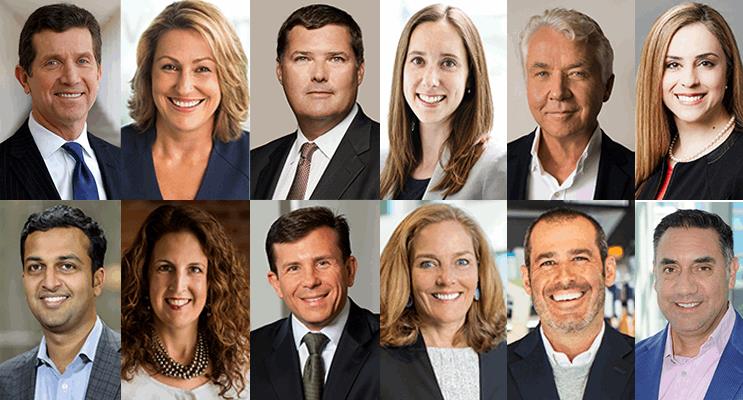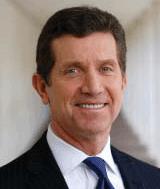Prophecy & Prognostication — A Charting Of Biopharma's Future
By Rob Wright, Chief Editor, Life Science Leader
Follow Me On Twitter @RfwrightLSL

Predicting the next big trends or business transformations in any industry — much less in biopharmaceuticals — is a crapshoot at best. For instance, at the end of 2016 a lot of experts envisaged at least one CAR-T therapy gaining approval in 2017. Instead, we got two: Gilead’s Yescarta and Kymriah from Novartis. But with Kymriah we also got a new approach to drug pricing — a 30-day money-back guarantee. How many had that approach to drug pricing on their radar?
So how do we best predict who or what might have a big impact on the biopharmaceutical industry in 2018? Although there are no guarantees with this kind of prognostication, we felt seeking the opinions of experienced top biopharma executives would be a good place to start. For answers we reached out to a cross section of biopharmaceutical industry CEOs, from the biggest of Big Pharma, to billionaires, to generic powerhouses, and just about everyone in between.
WHAT GLOBAL MACRO TREND WILL HAVE THE BIGGEST IMPACT ON BIOPHARMA IN 2018?
 Heather Bresch
Heather Bresch
Mylan
There is significant unmet medical need in emerging markets. As these countries achieve greater prosperity, they are gaining greater access to medicine. While it’s true that economic growth in these markets has slowed, we can still expect growth, just at a slightly slower pace. IMS Health estimates that “pharmerging” markets will spend $330 billion on pharmaceuticals by 2021. Similarly, we can expect populations in India, Russia, and Turkey to increase their healthcare spending over the next five years.
WHAT U.S. MACRO TREND WILL HAVE THE BIGGEST IMPACT ON BIOPHARMA IN 2018?
 Jeff Riley
Jeff Riley
Synthetic Biologics
If the current limbo over tax reform continues, an increasing number of development-stage companies may feel compelled to look at other nontraditional funding sources in 2018. Increased private investment from family funds, private equity, and venture capital, and perhaps even crowdfunding may emerge to fill the delta. One such strategy that may continue to gain traction in 2018 is the newly adopted REG A+ equity offering. REG A+, which stems from the JOBS (Jumpstart Our Business Startups) Act, uses a crowdfunding component that allows private companies to raise up to $50 million from the public markets. Like a traditional IPO, REG A+ allows companies to offer their shares to the public. Unlike traditional IPOs, however, REG A+ allows hundreds of smaller retail-minded investors direct access to a company’s IPO alongside accredited investors before shares become available in the secondary markets.
WHAT BIOPHARMA TRENDS DO YOU FIND MOST EXCITING?
 Rachel Haurwitz, Ph.D.
Rachel Haurwitz, Ph.D.
Caribou Biosciences
The continued intersection of technology and biotechnology is exciting and critical to the future of our industry. The overlap between these fi elds is happening in a myriad of ways, including tech entrepreneurs like Mark Zuckerberg and Sean Parker funding major research institutes and cutting-edge companies. Big Data analytics are necessary for our industry’s research efforts to understand the increasing volume of sequencing and genomics data we can collect, as well as clinical trial data sets. Tech giants like Alphabet, through its subsidiary Verily, are investing hundreds of millions on new data tools and technologies to better understand human health and inform ways to achieve better health outcomes.
WHAT’S GOING TO BE BIG IN BIOPHARMA IN 2018?
 John Crowley, J.D.
John Crowley, J.D.
Amicus Therapeutics
Our understanding of human genetics, medicines, Big Data, and our overall health will advance dramatically in 2018. The success of gene therapies and precision medicines will continue to accelerate in 2018. I expect major breakthroughs in gene-editing platforms and the introduction of human therapeutics. More people will have their human genome analyzed and interpreted. Clinical trials in many areas, such as rare diseases, will begin to be radically altered to reflect a growing understanding of the role of human genetics in predicting safety and efficacy of new medicines. We will move closer to the dawn of a golden era of medical and biotechnologies.
WHAT WILL THE GLOBAL BIOPHARMAINDUSTRY LOOK LIKE IN 10 YEARS?
 Lynn Seely, M.D.
Lynn Seely, M.D.
Myovant Sciences
Clinical development, sales, and marketing of medicines will be transformed by Big Data, digital innovation, and artificial intelligence (AI) converging to provide rapid and effi cient drug development and, most importantly, precision prescribing. The cumulative impact will be decreased costs as more medicines are quickly brought to market. Data acquisition, aggregation, and analytics will allow more rapid and efficient clinical trials with optimized enrollment criteria, site selection, patient recruitment strategies, statistical powering, and endpoint selection. Remote data collection and telemedicine using a variety of devices will make it much easier for patients to participate in clinical trials, regardless of geography or mobility. On-site source-data verification will become obsolete with most data monitoring performed electronically. Patients will gain information from a variety of credible electronic sources and take more control over their healthcare. The biopharma industry will provide information to physicians, other prescribers, and patients through digital mediums, and sales forces will find themselves in the same category as the rotary phone. In 10 years, the reputation of the pharmaceutical industry will be transformed to one of credibility and respect, as a result of the large number of clinically meaningful drugs brought efficiently to market at prices justified by patient benefit.
WHAT INNOVATIVE COMPANY OR PERSON OUTSIDE OF BIOPHARMA DO YOU PAY ATTENTION TO?
 Mitch Gold, M.D.
Mitch Gold, M.D.
Alpine Immune Sciences
Elon Musk has been the most innovative person outside of biopharma who’s taken a lot of personal and reputational risk to advance the electrification of America. He recognized that it’s not about the car; it’s about bringing power to the people in the form of innovative new battery technology. Initially, it wasn’t obvious why he’d merge Tesla and SolarCity, but when you think about electrifying the home and the storage challenges, it makes sense to combine capturing energy with solar panels and storing that energy locally with the Tesla wall battery. Musk believes the future of the world requires humans to be a multiplanetary species. As such, he founded SpaceX and is leading the charge of tackling this hugely audacious goal. Do we have anyone thinking this big in biopharma? CRISPR-Cas9 is probably the closest we get.
WHO WILL BE THE ELON MUSK OF BIOPHARMA?
 Julia Owens, Ph.D.
Julia Owens, Ph.D.
Millendo Therapeutics
I don’t believe there is an “Elon Musk” of biopharma, in large part because of the constraints of the industry itself. In biopharma, our discovery and development efforts usually happen outside of the limelight and over longer periods of time. We’ve seen breakthroughs in the past decades, including combinatorial chemistry, RNAi (RNA interference), and the sequencing of the human genome, which many predicted would fundamentally transform biopharma but have failed to dramatically alter overall timelines and costs of drug discovery and development. With those innovations have come some larger personalities, including Craig Venter (Celera) and John Maraganore (Alnylam). Other technological innovations are coming too, including more focused clinical studies — leveraging genetically directed, defined patient populations — which will drive efficiencies. But nothing appears likely to be so disruptive as to give anyone the mantle of “the Elon Musk of biotech.” The late Henri Termeer is the closest we’ve come. But even he did not transcend biopharma.
HOW SHOULD BIOPHARMA PREPARE TO CAPITALIZE ON THE NOTION TOP TALENT, NOT CAPITAL, WILL DRIVE SUCCESS?
 Sam Kulkarni, Ph.D.
Sam Kulkarni, Ph.D.
CRISPR Therapeutics
Over the last 10 years we’ve seen that highly specialized and focused teams with the appropriate resources can be much more productive than large distributed R&D groups with siloed functional expertise. This phenomenon is seen also when comparing the productivity of small biotechs vs. the R&D organizations of large pharma companies on a normalized spend basis.
WHAT MACRO TREND WILL SOON TAKE HOLD IN BIOPHARMA?
 Michelle Dipp, M.D., Ph.D.
Michelle Dipp, M.D., Ph.D.
Managing Director, General Atlantic
Former CEO of OvaScience
Mobility. While many of us travel internationally, some are preparing for their trip to Mars! While this is an exciting development, it also opens the door to a whole new universe of global health challenges that demand tech-enabled and innovative solutions to allow us to do everything from tracking/controlling epidemics, to storing vaccines, to enabling wellness in outer space.
WHAT METRICS DO YOU USE TO IDENTIFY KEY TRENDS?
 David Meek
David Meek
CEO of Ipsen
For me, the most significant is patient-centricity and, most importantly, the number of patients we treat with our medicines. As part of our overall growth strategy and to better address patient needs, we have set a target to launch a new drug or meaningful new indication for an existing drug every single year.
3 QUESTIONS FOR A BIOPHARMA BILLIONAIRE
 In June 2011, Randal J. (R.J.) Kirk was first featured in Life Science Leader. At that time, he was a little-known serial entrepreneur who started, grew, and sold three biotech companies. He also was a billionaire. In the seven years since, he has nearly doubled his wealth while also starting another company, Intrexon (NYSE: XON), which has dazzled us with nonbrowning apples, cloned kittens, and genetically modified mosquitoes to fight the Zika virus. When invited to participate in our annual outlook issue, Kirk responded, “It would be my pleasure to participate. This will be fun.” As usual, his insights do not disappoint.
In June 2011, Randal J. (R.J.) Kirk was first featured in Life Science Leader. At that time, he was a little-known serial entrepreneur who started, grew, and sold three biotech companies. He also was a billionaire. In the seven years since, he has nearly doubled his wealth while also starting another company, Intrexon (NYSE: XON), which has dazzled us with nonbrowning apples, cloned kittens, and genetically modified mosquitoes to fight the Zika virus. When invited to participate in our annual outlook issue, Kirk responded, “It would be my pleasure to participate. This will be fun.” As usual, his insights do not disappoint.
HOW DO YOU ENVISION AI OR OTHER TECHNOLOGIES IMPACTING BIOPHARMA?
The impact of machine-learning capabilities on biopharma will be enormous. Due to its massive complexity, biology resisted engineering longer than almost any field of technical human endeavor. We simply did not know enough to engineer anything with reliability. Today, however, in many cases, we know enough to be able to engineer to a result within a calculable probability range, and this has led to a very large number and wide variety of “high throughput” R&D programs, with the intent that the throughput will compensate for the many uncertainties that remain latent within models. Machine-learning systems, on the other hand, work well with probabilistic models. Currently, massive machine-language processors and software programs are in development, and as these technologies become applied to biology, we shall see the perfect marriage of IT and biotechnology.
WHAT MACRO TREND WILL TAKE HOLD IN BIOPHARMA?
The shift from a discovery-based industry to one that engineers its new products has been ongoing for three decades in biopharma, so the latter now represents the dominant motif. While industry has been reasonably quick to adapt to the promise of these technologies in terms of driving to results more quickly and cheaply, few of the other implications seem to have been broadly grasped by industry constituents. For example, once new products become the result of engineering, maintaining a leadership position or a franchise position of any type will require a commitment to continually engineer the product and improve upon it constantly. The industry’s former system of competing for monopolies of various types that reasonably could be expected to endure throughout the patent life of the initially approved product is, in my opinion, not likely to recur.
WHAT INNOVATIVE COMPANY OR PERSON OUTSIDE OF BIOPHARMA DO YOU PAY ATTENTION TO?
Facebook and Amazon illustrate different sides of how to perpetuate innovation in large companies. I enjoy watching Facebook for two reasons: First, they continue to reimagine what it means to lead the space they are in, successively upsizing the opportunity and then executing against the new challenge they just posed. Second, it is fun to watch them figure out how to manage their asset in the face of technophobia or some related public backlash. Whether the issue has been cyberbullying, fake news, or interference with elections and civil engagement, they seem initially to have been caught by surprise, but then quickly pivot to figure out how to manage their product responsibly in the face of the new challenge. Amazon, in some ways the opposite of Facebook, is always worth watching, because rather than working to expand and differentiate a single product, they develop lobes of capability and then seek to apply these to new space, sometimes with or without other internal lobes onboard. They seem always to have known, for example, that the cloud would happen as an infinitely scalable thing, and this would be a utility they not only could sell, but could utilize to enter and dominate diverse markets. With more lobes and markets comes a greater number of synergistic undertakings that become available. Imagine the number of arrows going every which way on their whiteboarding of the Whole Foods acquisition idea: By the time they were done, no doubt they had more arrows than boxes! The primary relevance of these two companies to the biotechnology leadership is clear: We have been horrible at managing our product socially (unlike Facebook), and very few of our industry participants ever seriously consider what their real lobes of capability are, let alone search for ways to use them (unlike Amazon).
INSIGHTS FROM J&J’S CHAIRMAN OF THE BOARD AND CEO, ALEX GORSKY
 J&J’s current CEO, Alex Gorsky, joined the company following six years of service in the U.S. Army. Having finished his military career with the rank of Captain, Gorsky began his career as a field sales representative with Janssen Pharmaceutica, and he is the only current top 10 Big Pharma CEO who can claim to “having carried a bag.” What are some of the trends he is watching for in 2018?
J&J’s current CEO, Alex Gorsky, joined the company following six years of service in the U.S. Army. Having finished his military career with the rank of Captain, Gorsky began his career as a field sales representative with Janssen Pharmaceutica, and he is the only current top 10 Big Pharma CEO who can claim to “having carried a bag.” What are some of the trends he is watching for in 2018?
GLOBAL HEALTHCARE TRENDS IMPACTING BIOPHARMA IN 2018
The digital information revolution is enabling unprecedented global collaboration and private-public partnerships to advance medicine and health and wellness. Collaboration drives innovation and will lead to more targeted, efficient, and earlier intervention. We will be able to intercept disease earlier and earlier, even before symptoms develop. We can expect effective vaccines for HIV, lung cancer, and Hepatitis B. We can easily imagine the elimination of Hep C and tuberculosis. We also will be creating effective new treatments for dementia and Alzheimer’s disease. The opportunity for helping people live longer, healthier, and happier lives has never been greater.
GLOBAL MACRO TRENDS IMPACTING BIOPHARMA IN 2018
Despite improving economic conditions, governments will continue to be cost-conscious in confronting the global challenge of providing access to quality healthcare to more people, everywhere. That is particularly the case in healthcare in the U.S. We must move from a system that has, for a long time, emphasized paying for volume in care, to one that emphasizes paying for value. We must put the focus on the patients’ needs first and on outcome for patients and their families — then define what achieves that best result. I am very optimistic for young people today. They are engaging in their health in new and different ways. Access to information on health and wellness, greater transparency on the part of the healthcare industry, and the continuing march of new technologies will allow them to be what I call “Generation H” — the healthiest generation in the history of humankind.
